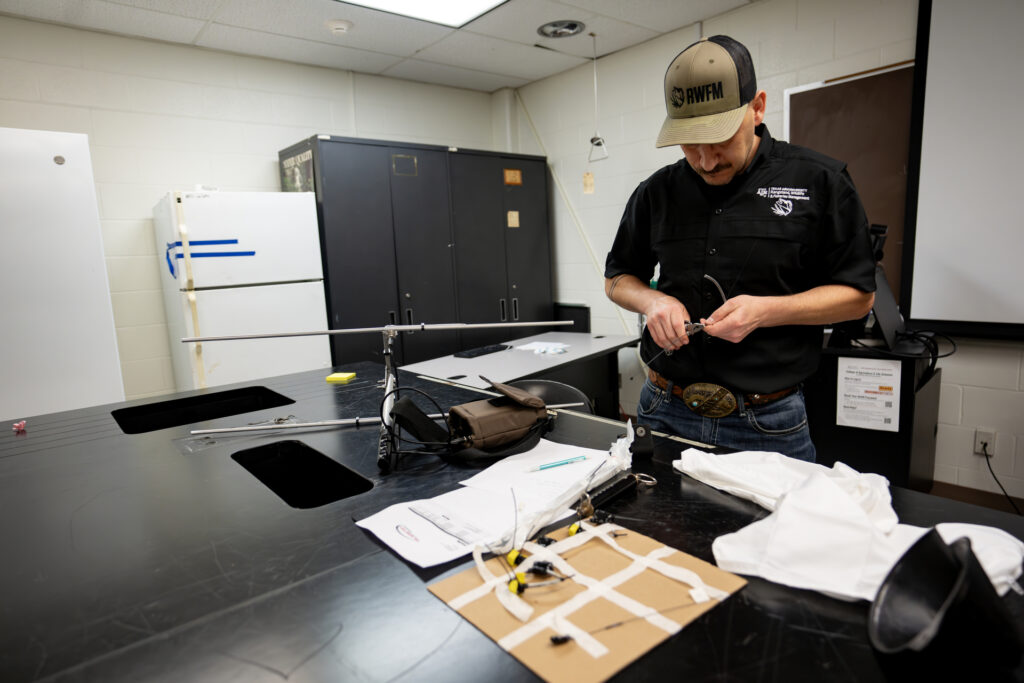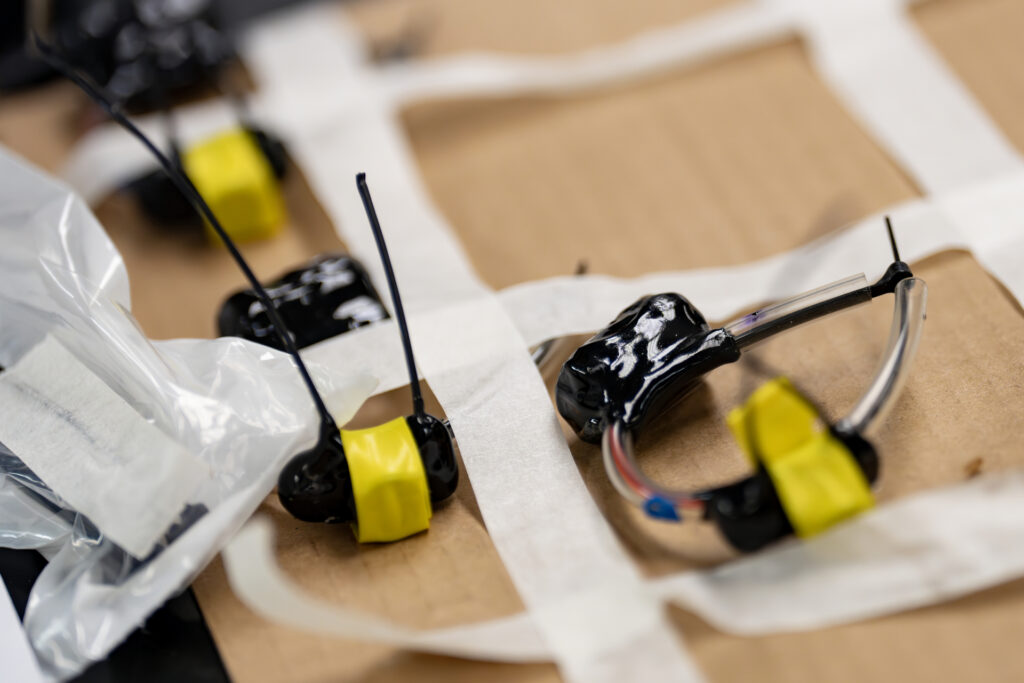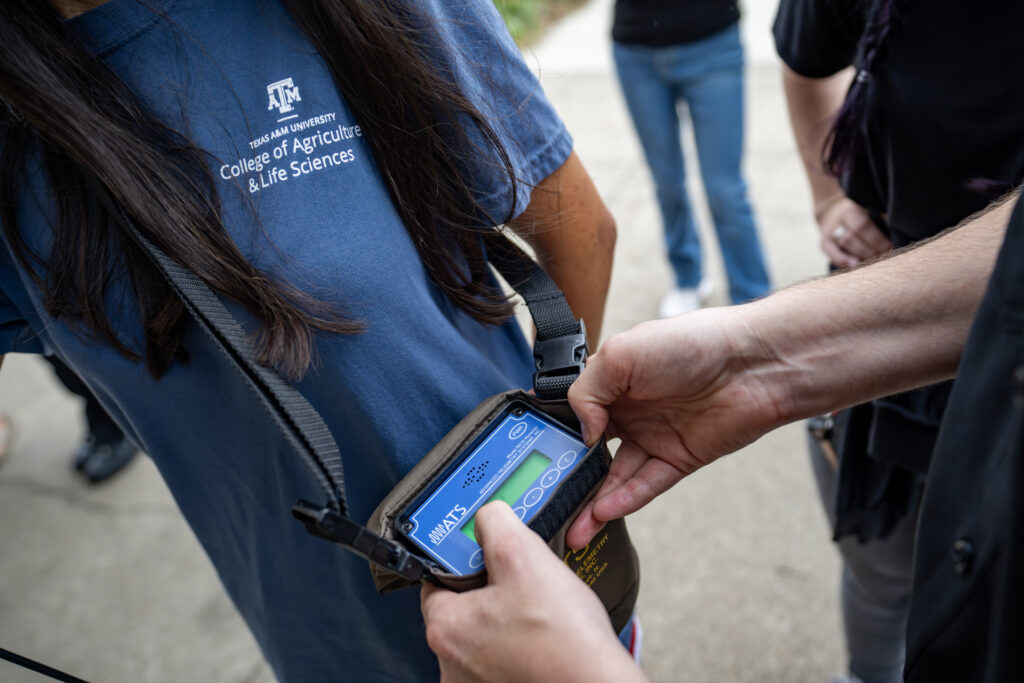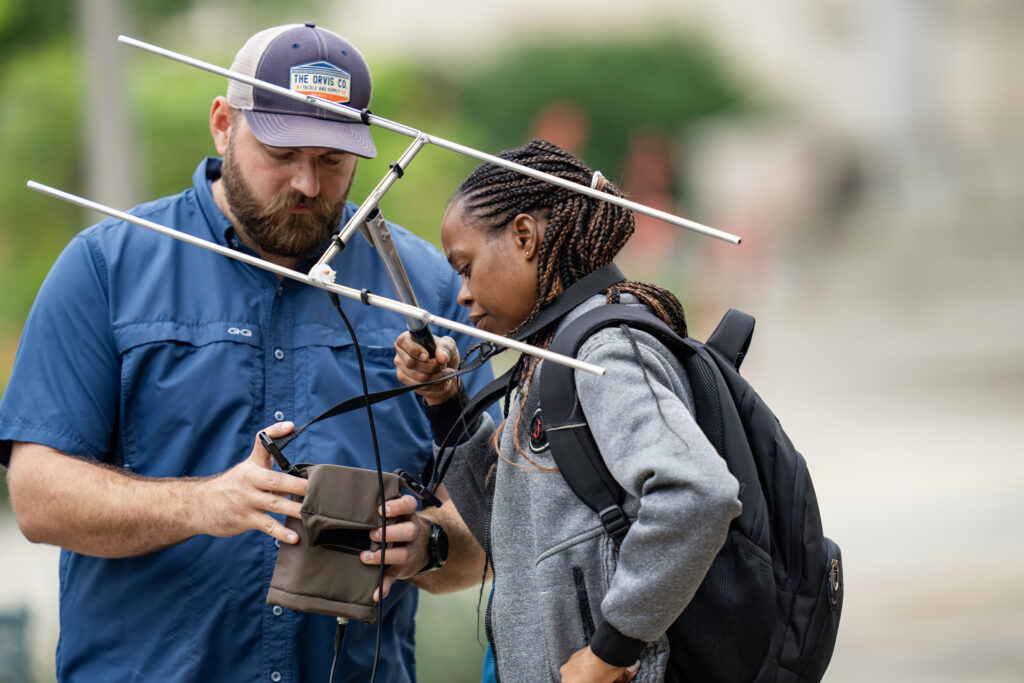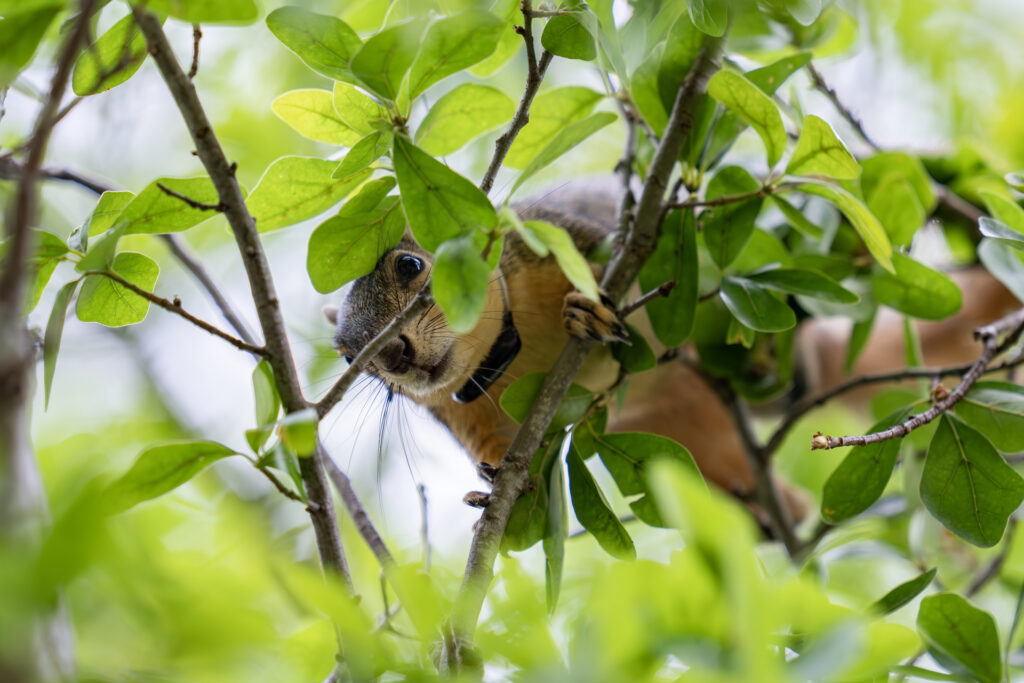- South Texas Students Meet Accordion Music Icons Los Tigres Del Norte In Edinburg Thanks To Khs America/Hohner Alianza Académica Initiative
- Fragile Planet Offers a Nighttime Wildlife Experience
- Falcons Soccer Off & Running
- Cameron County Receives Funds to Improve Two Parks
- Falcons Complete First Half of 32-6A
- School District to Help out Victims of California Wildfires
- Sand Castle Days Continued Despite Unexpected Weather
- Ready for District
- Discussion of Garbage Dumpster Rates, Agreements Between State & City on Highway Regulations, and More
- 31st Annual Shrimp Cook-Off is Right Around the Corner
Scholarly Squirrels: Exploring the Dynamics of Texas A&M’s Campus Wildlife
- Updated: May 2, 2024
Ongoing project will provide undergraduate wildlife students with hands-on field experiences
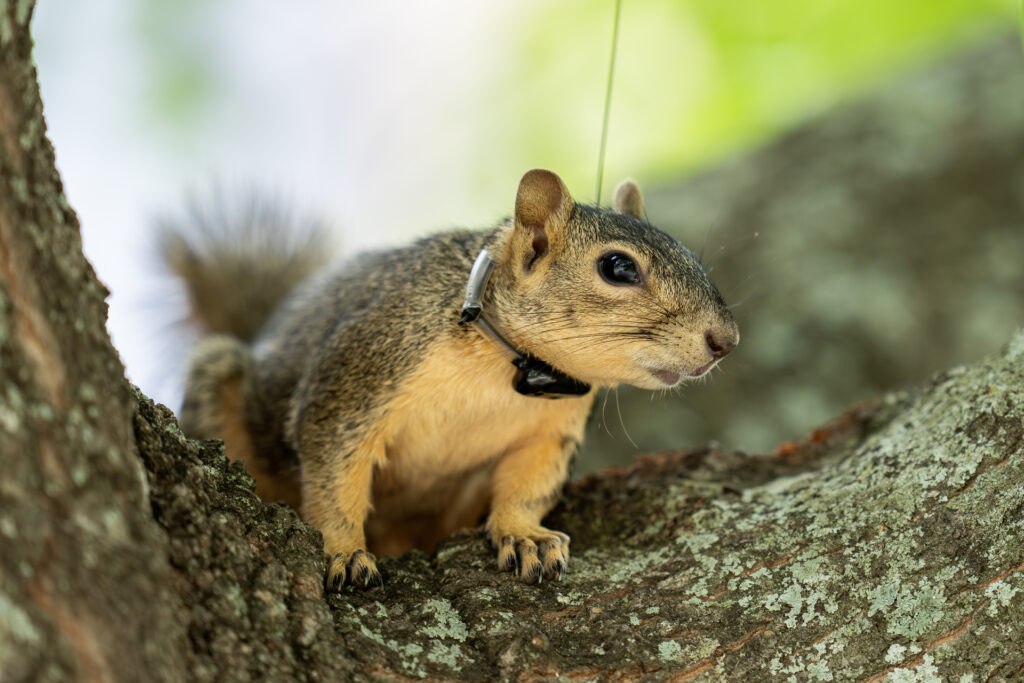
Beginning this month, students in the Texas A&M College of Agriculture and Life Sciences Department of Rangeland, Wildlife and Fisheries Management, RWFM, will use various field techniques and statistical analyses to provide quantitative insight into the world of these bushy-tailed, campus rodents.
Campus wildlife provides unique learning opportunities
Of the eight squirrel species that call Texas home, the highly adaptable Eastern fox squirrel has seemingly found its niche in the open, park-like environments of universities across much of the state. With a variety of habitat options, an abundant food supply, and relatively few predators, it’s no surprise that these campus squirrels flourish.
Ty Werdel, Ph.D., RWFM assistant professor, said this provides the perfect opportunity to integrate accessible, field-based monitoring with academic coursework.
“The presence of urban wildlife on campus enables our students to conduct research and practice key technical skills in their own backyard,” Werdel said.
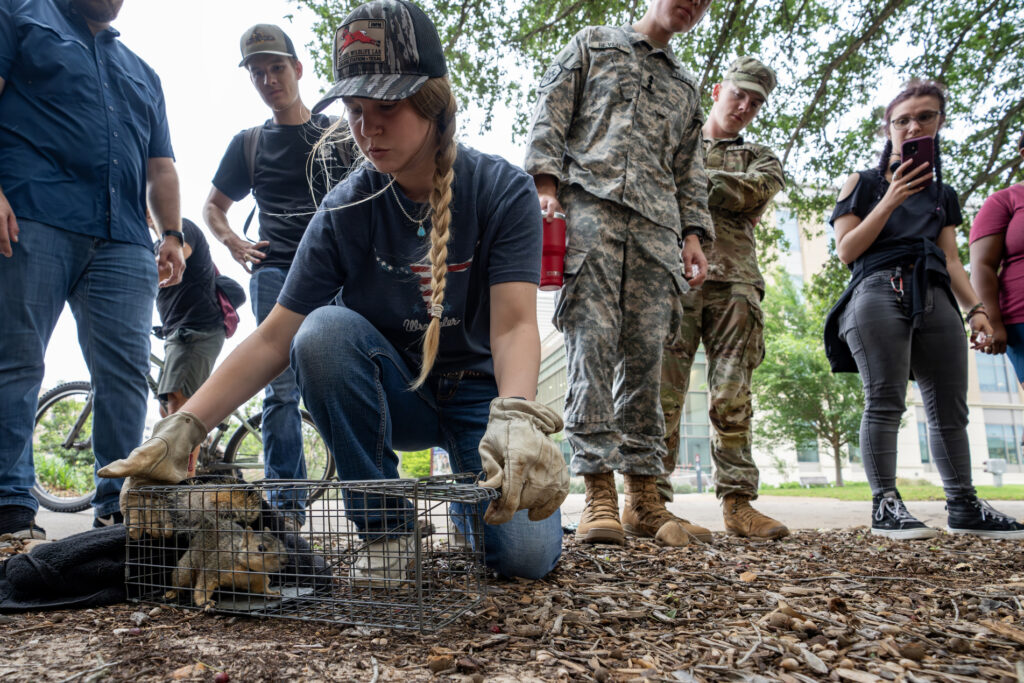
Project launches this spring
Led by Werdel and RWFM graduate students, undergraduates enrolled in Techniques in Wildlife Management will set traps located in trees to capture 12 squirrels across campus. Once the animals are captured, students will collect data such as sex and weight and equip the squirrels with micro-GPS collars.
Werdel said these GPS collars, like very small pet collars, have no detrimental effect on the daily activities of the wildlife wearing them and will provide researchers with fine-scale spatial insight into their movement and behavior.
To mitigate stress on the animal and ensure human safety, only trained personnel will be allowed to handle the squirrels; however, wildlife students will assist in the process. Further, the trapping will take place only in the early morning or late evening hours to avoid the hottest portions of the day.
“It’s important for us to ensure this process results in the least amount of stress possible for the squirrels,” Werdel said. “Prior to even starting this work, we obtained a research permit from the Texas Parks and Wildlife Department and approval from the Texas A&M Division of Research Animal Use Protocol.”
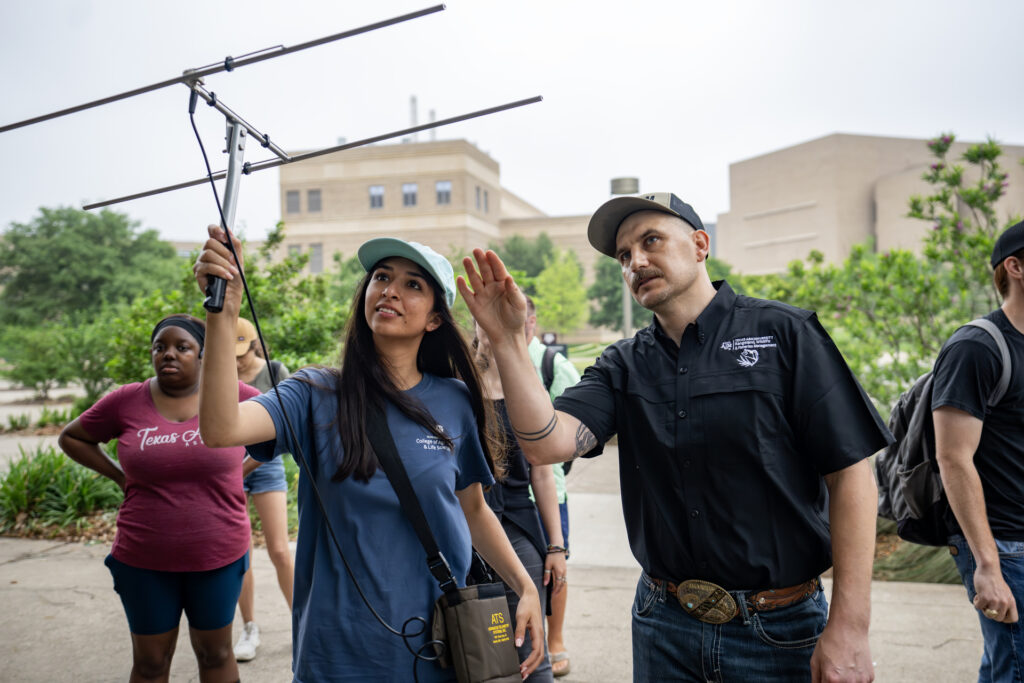
Information collected sheds light on the campus squirrels
In addition to monitoring general movement patterns, the GPS collars, other survey methods and statistical modeling will enable students enrolled in two additional undergraduate courses — Wildlife Population Dynamics and Urban Wildlife and Fisheries — to determine the campus squirrel population, as well as home ranges and habitat preferences across the landscape.
For example, thanks to an existing geographic information system, GIS, database of campus trees, along with data on building density and roads, students can correlate squirrel activity and density with particular landscape features. This helps researchers better understand which campus elements squirrels most prefer or avoid.
Further, students will monitor and assess squirrel mortality, locate and monitor nesting dens, and estimate squirrel populations on campus based on surveys.
“This project will enable students to learn and implement an array of basic wildlife techniques including radio telemetry, census methodology, trapping, GIS and statistical analyses,” Werdel said. “Beyond gaining an understanding of the population dynamics of urban squirrels, this project is really about equipping our students with the skills needed to successfully enter the career field of wildlife management.”

Building on existing campus data
This isn’t the first time Texas A&M students have investigated the behavior of campus squirrels. Twenty-five years ago, Roel Lopez, Ph.D., head of the Department of Rangeland, Wildlife and Fisheries Management and director of the Texas A&M Natural Resources Institute, launched a similar project.
“At the time, urban squirrels had never been studied in Texas and had rarely been studied in the U.S.,” said Lopez, then an assistant professor.
This project spanned six years and led to numerous findings, including that male squirrels on the Texas A&M campus are more likely to die from highway-related deaths than females.
Department faculty were able to revive this project thanks in part to financial support from an alumnus of Texas A&M’s wildlife program.
“College Station and the Texas A&M campus have urbanized and changed drastically since the initial study,” Lopez said. “This will provide an amazing opportunity to see if these changes have affected how these animals use the landscape.”
Werdel said understanding the impact of urbanization on all wildlife species is extremely relevant as cities continue their outward expansion and overlap with wildlife habitat.
“The project’s primary objective is to prepare our students with the technical knowledge and skills needed to conserve and manage any number of wildlife species in an evolving environment,” Werdel said. “While this research is specific to our campus, students will be able to apply what they learn through this project to future wildlife management endeavors.”



